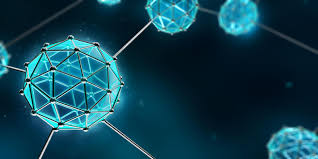Medicine has witnessed numerous groundbreaking advancements, but few hold as much promise as nanomedicine. This cutting-edge branch of medicine leverages nanotechnology principles to develop innovative treatments and diagnostic tools that operate at the molecular and cellular levels. With the potential to revolutionize how we approach disease prevention, diagnosis, and treatment, nanomedicine represents the future of medical technology. This article will explore what nanomedicine is, how it works, and the transformative impact it could have on healthcare.
What is Nanomedicine?
Defining Nanomedicine
Nanomedicine is the application of nanotechnology—the manipulation and control of matter on an atomic, molecular, and supramolecular scale—to medicine. It involves using nanoparticles, nanoscale materials, and nanoscale processes to diagnose, treat, and prevent diseases. Nanomedicine operates at the scale of nanometers, where one nanometer is one billionth of a meter, allowing for unprecedented precision in medical interventions.
Core Components of Nanomedicine
The key components of nanomedicine include:
- Nanoparticles: These are tiny particles that range in size from 1 to 100 nanometers. Due to their small size and large surface area-to-volume ratio, nanoparticles possess unique properties that make them ideal for medical applications.
- Nanosensors: Devices at the nanoscale can detect and measure specific biological markers, such as proteins or nucleic acids, for diagnostic purposes.
- Nanocarriers: These are nanoscale vehicles designed to deliver drugs, genes, or other therapeutic agents directly to targeted cells or tissues, minimizing side effects and improving treatment efficacy.
- Nanodevices: Miniature devices that can perform specific tasks, such as imaging, sensing, or drug delivery, within the body.
The Origins and Evolution of Nanomedicine
Historical Background
Physicist Richard Feynman first introduced the concept of nanomedicine in his 1959 lecture, “There’s Plenty of Room at the Bottom,” where he discussed the possibility of manipulating individual atoms and molecules. However, it wasn’t until the 1980s, with the advent of advanced nanotechnology tools, that the practical applications of nanomedicine began to take shape.
In the early 2000s, nanomedicine emerged as a distinct field, fueled by advances in nanotechnology, materials science, and molecular biology. Since then, it has proliferated, with numerous breakthroughs in areas such as drug delivery, imaging, and regenerative medicine.
Key Milestones in Nanomedicine
Some of the significant milestones in the development of nanomedicine include:
- 1990s: Development of the first nanoparticle-based drug delivery systems, such as liposomes and polymeric nanoparticles.
- 2004: The FDA approval of Doxil, a liposome-encapsulated form of the chemotherapy drug doxorubicin, marking the first nanoparticle-based drug to receive regulatory approval.
- 2010s: Advancements in nanoscale imaging techniques, such as super-resolution microscopy, enabling detailed visualization of cellular processes.
- 2020s: The use of lipid nanoparticles in developing mRNA vaccines for COVID-19, demonstrating the real-world impact of nanomedicine.
Applications of Nanomedicine in Healthcare
1. Targeted Drug Delivery
One of the most promising applications of nanomedicine is targeted drug delivery. Traditional drug delivery methods often distribute drugs throughout the body, affecting both healthy and diseased tissues. This can lead to side effects and reduce the effectiveness of the treatment.
Nanomedicine allows for the design of nanocarriers that can deliver drugs directly to specific cells or tissues. These nanocarriers can be functionalized with ligands or antibodies that recognize and bind to specific receptors on the surface of target cells. Once the nanocarrier reaches its destination, it can release the drug in a controlled manner, ensuring that the medication is delivered precisely where it is needed.
For example, in cancer treatment, nanoparticles can be designed to deliver chemotherapy drugs directly to tumor cells, minimizing damage to healthy tissues and reducing side effects. This targeted approach enhances the efficacy of the treatment while allowing for lower doses of the drug to be used.
2. Advanced Diagnostic Techniques
Nanomedicine is also revolutionizing diagnostic techniques, enabling earlier and more accurate disease detection. Nanosensors and nanoparticle-based imaging agents offer enhanced sensitivity and specificity compared to traditional diagnostic methods.
- Nanosensors: These devices can detect minute quantities of biomarkers—such as proteins, nucleic acids, or metabolites—in biological samples, allowing for early detection of diseases such as cancer, infectious diseases, and neurodegenerative disorders.
- Nanoparticle-Based Imaging: Nanoparticles can be used as contrast agents in imaging techniques such as magnetic resonance imaging (MRI), computed tomography (CT), and positron emission tomography (PET). These nanoparticles improve the contrast and resolution of images, enabling more accurate diagnosis of conditions like tumors, cardiovascular diseases, and brain disorders.
3. Regenerative Medicine
Nanomedicine plays a crucial role in regenerative medicine, which focuses on repairing or replacing damaged tissues and organs. Nanoparticles and nanomaterials are used to develop scaffolds and matrices that promote tissue regeneration and healing.
For instance, nanomaterials can be engineered to mimic the extracellular matrix, providing a supportive environment for cell growth and tissue development. In bone regeneration, nanoparticles made of biocompatible materials can enhance bone formation and mineralization, improving the outcomes of bone grafts or implants.
Nanomedicine also holds promise for developing stem cell therapies. In these therapies, nanoparticles can be used to deliver growth factors or genes that direct stem cells to differentiate into specific cell types, aiding in tissue repair.
4. Nanomedicine in Cancer Therapy
Cancer therapy is one of the areas where nanomedicine has shown significant potential. In addition to targeted drug delivery, nanomedicine offers innovative approaches to cancer treatment, such as:
- Photothermal Therapy: Gold nanoparticles can be injected into the bloodstream, where they accumulate in tumors. When exposed to near-infrared light, these nanoparticles heat up, destroying cancer cells while sparing healthy tissues.
- Photodynamic Therapy: This method involves using nanoparticles that carry a photosensitizing agent. Once these nanoparticles accumulate in the tumor, the area is exposed to light, activating the photosensitizer and producing reactive oxygen species that kill cancer cells.
- Gene Therapy: Nanoparticles can deliver genetic material, such as small interfering RNA (siRNA), directly into cancer cells. This genetic material can silence specific genes involved in cancer cell growth, effectively stopping the disease at its source.
5. Nanomedicine in Infectious Diseases
Nanomedicine is also being explored for its potential in combating infectious diseases. Nanoparticles can be engineered to deliver antiviral drugs or vaccines directly to infected cells, enhancing the efficacy of the treatment.
Lipid nanoparticles, for example, were used in the development of mRNA vaccines for COVID-19, demonstrating the potential of nanomedicine to respond rapidly to emerging infectious diseases. Nanoparticles can also be used to develop new antimicrobial agents that are effective against drug-resistant bacteria and other pathogens.
Challenges and Ethical Considerations
Challenges in Nanomedicine
Despite its potential, nanomedicine faces several challenges that need to be addressed:
- Safety and Toxicity: The long-term safety of nanoparticles is not yet fully understood. Nanoparticles can interact with biological systems in complex ways, leading to potential toxicity. Rigorous testing and regulation are needed to ensure the safety of nanoparticle-based therapies.
- Manufacturing and Scalability: Producing nanoparticles with consistent quality and at a scale suitable for clinical use can be challenging. Variations in size, shape, and surface properties can affect their performance, making it essential to develop reliable manufacturing processes.
- Regulatory Approval: The regulatory pathway for nanomedicine is still evolving. Ensuring that these therapies meet regulatory safety, efficacy, and quality standards is critical for their successful adoption.
Ethical Considerations
Nanomedicine also raises ethical questions that must be carefully considered:
- Privacy and Data Security: Nanosensors and nanodevices can collect vast amounts of patient health data. Ensuring the privacy and security of this data is paramount.
- Equitable Access: As with any advanced medical technology, there is a risk that nanomedicine could exacerbate existing healthcare disparities. Ensuring equitable access to nanomedicine therapies is essential.
The Future of Nanomedicine
The future of nanomedicine is bright, with ongoing research and development likely to overcome current limitations and lead to new and improved therapies and diagnostics. As our understanding of nanotechnology continues to grow, we can expect to see even more innovative applications that will transform the way we diagnose, treat, and prevent diseases.
Conclusion
Nanomedicine represents the cutting edge of medical technology, offering the potential to revolutionize healthcare through its applications in targeted drug delivery, advanced diagnostics, regenerative medicine, and more. While challenges remain, the continued development of nanomedicine holds the promise of a future where diseases can be diagnosed earlier, treated more effectively, and even prevented altogether. As we continue to explore the potential of nanotechnology, the question is not whether nanomedicine will change the future of healthcare but how profoundly it will do so.

Ruby Stauffer is a prominent technology blogger known for her insightful analysis and in-depth reviews of the latest tech trends and gadgets. Her blog has become a go-to resource for tech enthusiasts seeking reliable information and expert opinions on the ever-evolving world of technology.

